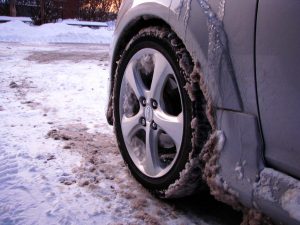
Browse our handpicked selection of vehicles that currently carry a very favorable book value in relation to where they are priced.
If you are looking for a vehicle that could help relieve some negative equity pain in your current vehicle, these selections could help get you on your way.
Maybe you just want to make a great buy and purchase a vehicle priced well under current book value. Taylor's AutoMax is here to help! Click here!
Sincerely,
Your Taylor's Auto Max Team
The year is flying by and before you know it, you’ll be bundling up against the wind and snow. While you might be ready with your scarf and gloves, is your car ready for winter?
Fall is the ideal time to change your tires and get your car ready for winter. Now is the time to check on your car’s tires and find out if you need to get new ones. It’s much better to plan ahead and get what you need before that first snowfall arrives.
How to Know If You Need New Tires
One of the first things you should consider is how old your tires are. If they are more than five years old, you should be taking them in for professional inspections at least once a year. If your tires are more than 10 years old, you should definitely be replacing them with new tires.
It’s not just age that causes wear and tears in tires. Bad weather conditions, heat, improper air pressure, speeding, quick braking, potholes, and chemicals can all cause your tires to wear out.
It’s also important to keep an eye on how your tires look. Do you notice any uneven tread wear, damaged valve caps, or shallow tread? You can check your tread by using a penny. Insert the penny head down. If you can see the top of Lincoln’s head, then it’s time for new tires.
Which Types of Tires Do You Need?
Even if your tires still have great tread and ride well, you may want to consider swapping out your current tired for winter or all-season tires. There are several different types of tires, and if you currently have summer tires or tires that aren’t made for extremely cold temperatures, then you definitely need to swap them out for new ones.
If you live somewhere that only gets a moderate amount of snow, then all-weather tires are your best option. This means you can use them year-round in both moderately hot temperatures as well as in icy or snowy conditions.
However, if you live somewhere that gets a lot of snow or temperatures that regularly fall below 44 degrees Fahrenheit, then you will want to invest in winter tires. The rubber on a normal all-weather tire gets hard at temperatures below 44 degrees. In order for a tire to work at it’s best, especially when you need traction, it needs to be soft.
Winter tires have tread that has been specifically designed to help you stop in ice, snow, and even cold dry roads. The rubber used on the tires ensures that the tires stay flexible even at very low temperatures, so there is no risk of hard rubber.
If you’re not sure whether or not you need new tires or are confused about what type of tires to use for your vehicle this winter head to Taylors Auto Max and speak to a specialist. They can give you advice on the best tires for your vehicle and even help you winterize your vehicle for those cold Montana days that are looming ever closer.








